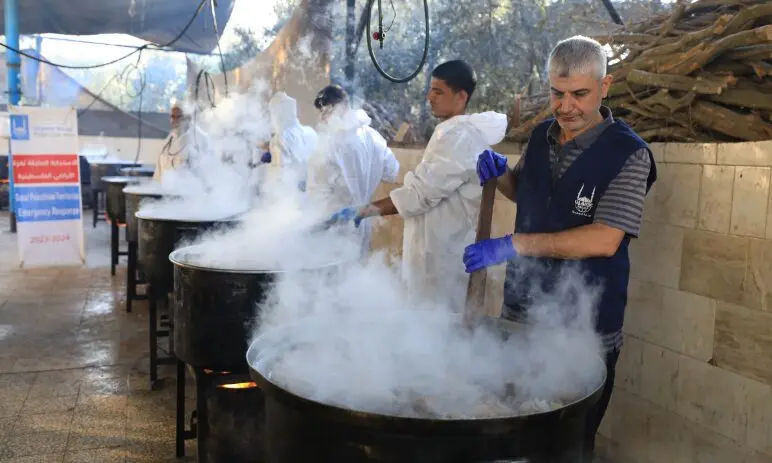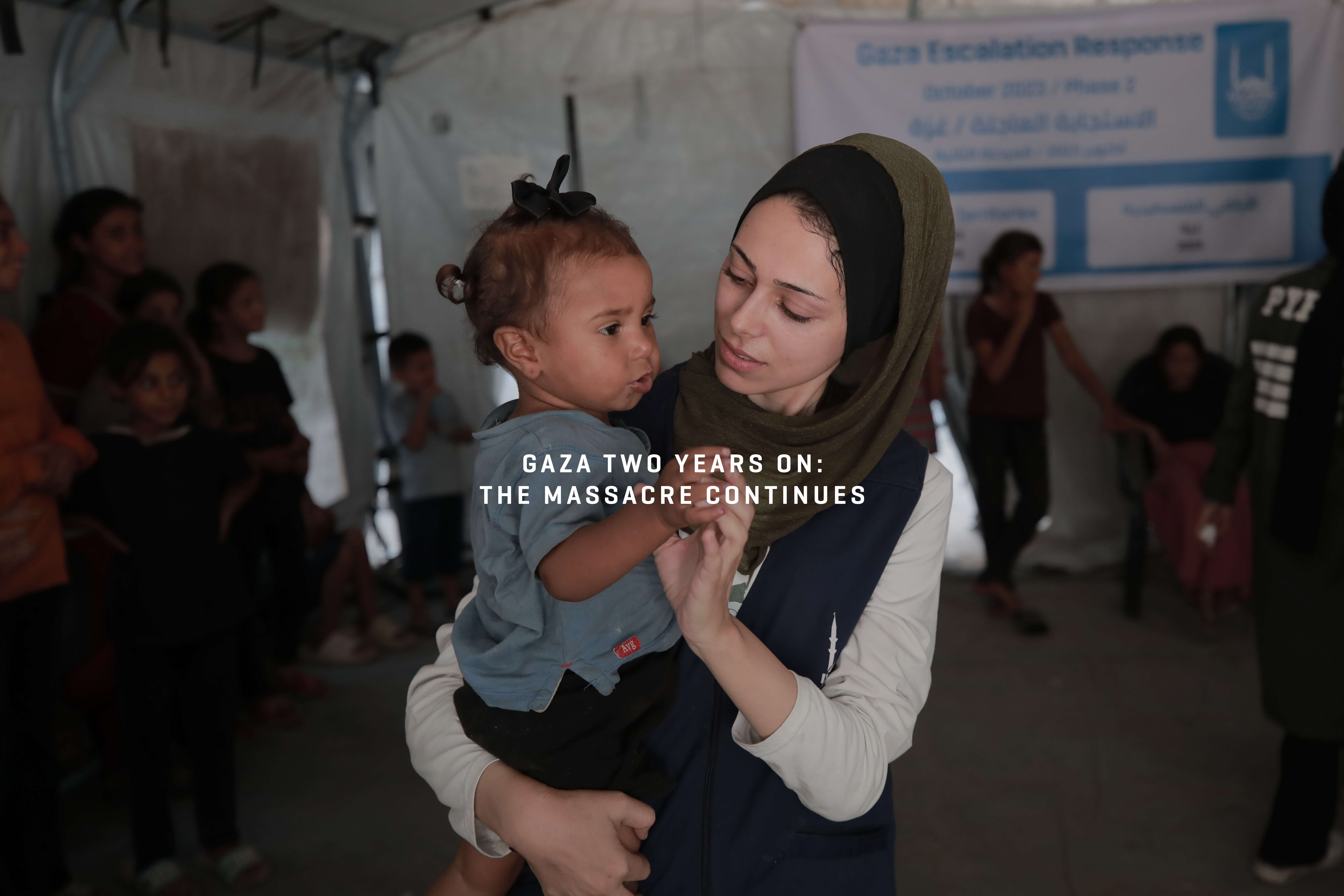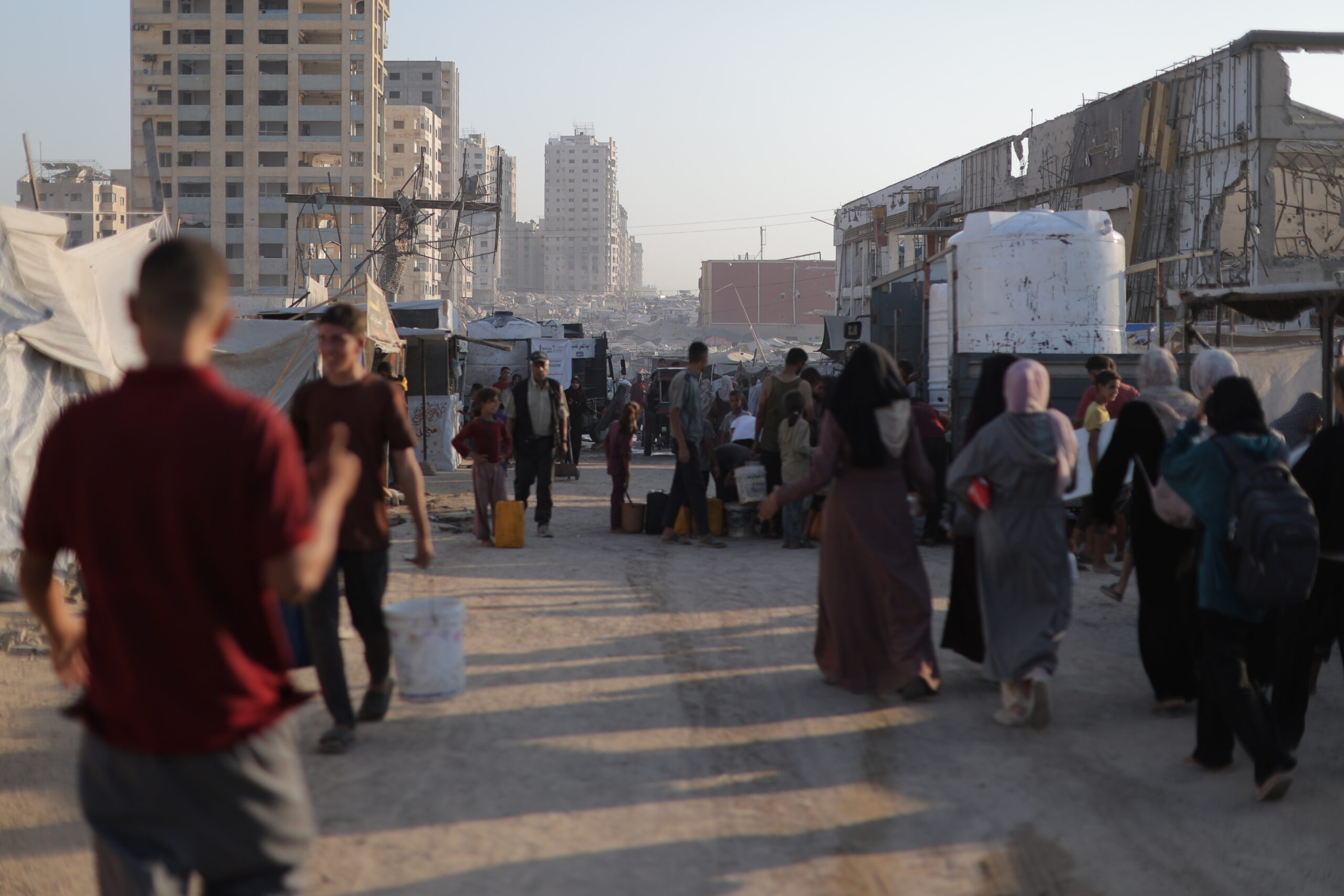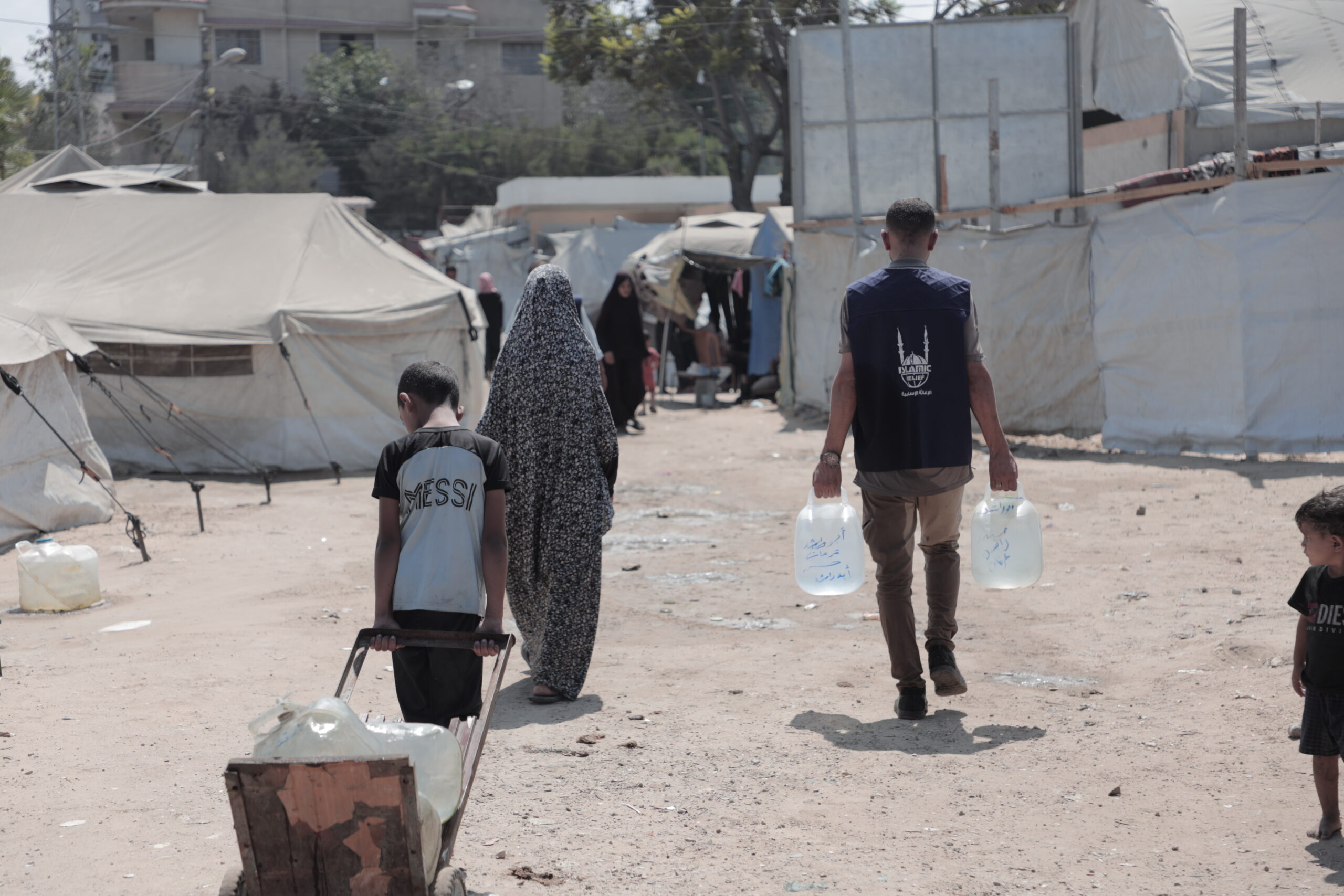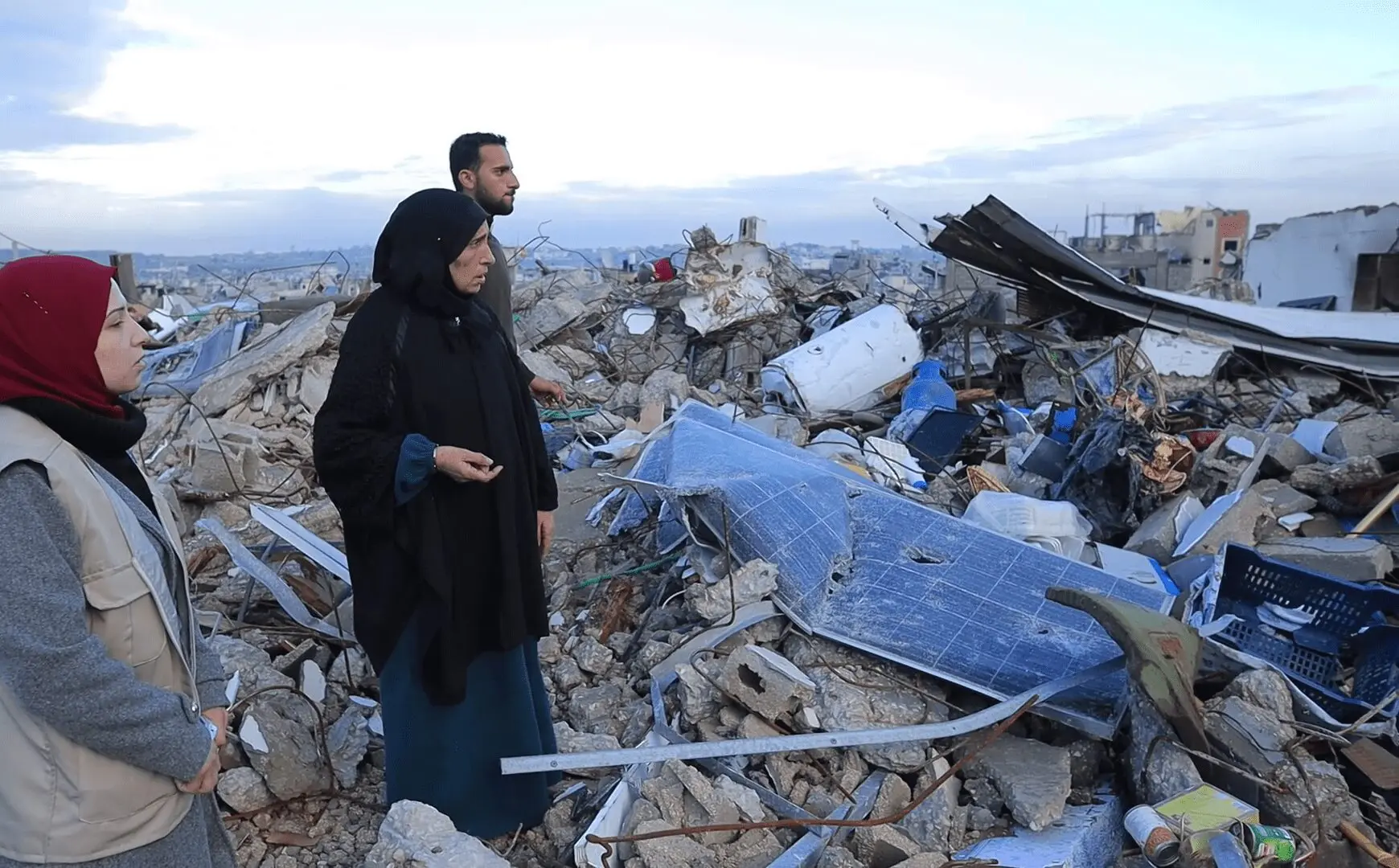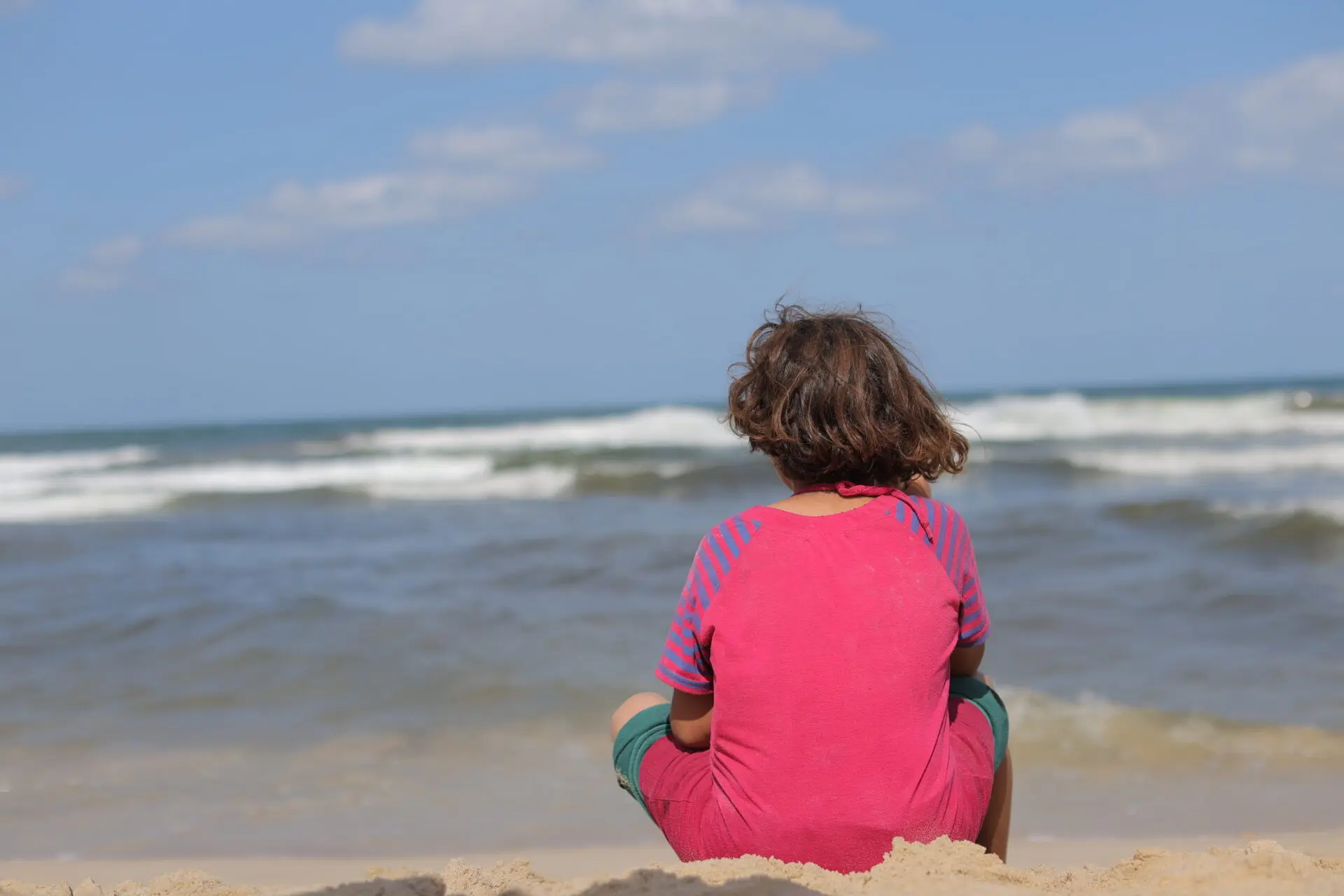
10.15.25
Gaza Ceasefire Explained
On 10 October, the first phase of a ceasefire between Israel and Hamas came into effect. While aid organisations, including Islamic Relief, welcomed the news, much uncertainty remains, and the humanitarian situation is still catastrophic.
Here, we explain what the ceasefire involves and what it could mean for the humanitarian crisis in Gaza.
What is a ceasefire?
A ceasefire is an agreement to pause acts of violence by military and/or other armed forces and groups in a conflict. Ceasefires usually have a series of conditions attached and last for a sustained period of time.
Ceasefires can be a first step in de-escalating a conflict. They can be employed for humanitarian purposes, such as bringing more aid into a conflict zone or allowing civilians to escape to safety.
A ceasefire is not the same as an armistice, which is a formal agreement to permanently end all military operations in a conflict. Armistices do not establish peace, but rather end fighting so involved parties can commit to resolving their differences through negotiations.
How did the Gaza ceasefire happen?
The first phase of the ceasefire came into effect on 10 October at 12:00 local time (09:00 GMT), after Hamas agreed and the Israeli government voted to approve the US-brokered agreement.
The announcement is a significant step. But long overdue after around 68,000 people have been killed, Gaza has been bombed into rubble, and a man-made famine.
Islamic Relief and many other organisations have repeatedly called on the international community to demand a ceasefire. There has been huge and sustained public pressure, but little apparent progress. However, in recent weeks, mediators including the US, Qatar, and Türkiye had increased pressure on both sides.
What are the terms of the Gaza ceasefire?
The ceasefire is expected to follow several stages, with negotiations continuing throughout the first stage to agree key unresolved issues such as disarmament and who will govern Gaza after the ceasefire.
The first stage is now underway, with Hamas releasing the 20 still-living hostages captured on 7 October and the bodies of other hostages, and Israel releasing almost 2,000 Palestinians from Israeli jails and also beginning to return the bodies of hundreds of Palestinians.
Israeli forces have also partially withdrawn from parts of Gaza. But they retain full control of more than half of the enclave. Israel has also said it will allow 600 trucks carrying aid and essential items to enter Gaza each day, and will allow displaced Palestinians to return through the Rafah crossing under EU-supervised coordination with Egypt.
The US has deployed 200 troops to Israel, which it says will oversee the ceasefire’s implementation. These troops will not enter Gaza itself.
Are there any barriers to the ceasefire’s success?
Yes. Relations between the two sides are incredibly strained, and any violations from either side risk completely derailing negotiations.
Israel’s blockade remains in place, which means it retains full control over what comes in and out of Gaza. On 14 October, Israel announced it would cut the number of aid trucks allowed in to just 300 per day and shut the Rafah crossing once more. It reportedly reversed this decision the following day, but this illustrates the fragility of the agreement and the level of control that Israel continues to have over humanitarian access.
The humanitarian crisis in Gaza is catastrophic, and aid delivery to starving people must not be a bargaining chip for negotiations that can be withdrawn at any moment.
Over the past 24 hours, there have also been reports of several Palestinians shot dead by Israeli forces. While many other sticking points will need to be ironed out to see future stages of the ceasefire implemented successfully. For example, questions remain over whether Hamas will disarm and who should govern Gaza after the ceasefire.
The ceasefire agreement does not apply to the West Bank, including East Jerusalem, where we have seen an increase in Israeli attacks and human rights violations over the past two years. A further escalation there could also jeopardise the deal.
Despite the challenges, both sides have already made compromises to agree to the current ceasefire, and international pressure for an end to the conflict is likely to remain intense during this first stage.
What happened to the last ceasefire in early 2025?
The previous ceasefire agreement, announced in January 2025, initially brought some respite for people and allowed aid agencies, including Islamic Relief, to scale up our work. However, it quickly broke down. Within weeks, Israel resumed and intensified its bombing and enforced a total siege of Gaza, shutting off all aid and commercial supplies. Israel also escalated its attacks on Palestinians in the West Bank, including East Jerusalem, during the ceasefire period. This must not be allowed to happen again this time.
What’s happening in Gaza right now?
Since the ceasefire was announced, over 332,000 people are thought to have moved to other parts of the Gaza Strip. Many return to find their homes reduced to rubble. While some are recovering what belongings they can and returning to shelters, others are setting up tents on the sites of their former homes. Some family members have been able to reunite after months of sheltering separately.
Is more humanitarian aid entering Gaza?
The ceasefire commits to a target of 600 trucks a day. This is similar to the number reaching Gaza before the current crisis. However, in recent months, the influx of aid has been practically non-existent, meaning 600 trucks a day will be a small drop in an ocean of need.
So far, we are seeing a small but significant increase in the amount of aid getting in. But it is still just a fraction of what has been agreed.
Restrictions on the types of goods that can enter Gaza remain in place and are likely to impact the delivery of some desperately needed items. Gaza has been under Israeli blockade since 2007, which restricts the movement of goods and people in and out of the Strip.
This has huge implications for humanitarian efforts. For example, thousands of essential items are restricted from entering Gaza because Israel considers them to have a ‘dual use’. This means it can be used for both civilian and military purposes. Things like fuel, water filters, solar pumps and surgical scissors have been refused entry on these grounds.
The United Nations Secretary-General has committed to scaling up humanitarian relief in Gaza. They urge the unimpeded entry of aid and essential commercial materials.
Will Islamic Relief deliver more aid to Gaza?
Islamic Relief is ready to massively scale up our current lifesaving aid and help reconstruction efforts as soon as restrictions on humanitarian access are lifted. We hope the ceasefire agreement will enable us and other aid agencies to get aid to Palestinian families in dire need.
We note that previous promises to allow more aid into Gaza have been immediately broken and urge that all restrictions on humanitarian access be lifted. The international community must hold Israel to account if aid continues to be blocked.
As of October 2025, all of Islamic Relief’s programming in Gaza has been made up of emergency projects.
Throughout the crisis, we have supported Palestinians in Gaza by delivering hot meals, food parcels, water, and hygiene kits. We also expanded our Orphan Sponsorship Program, and are addressing mental and physical healthcare needs wherever possible. This work will expand in the coming days and weeks.
What was the situation like before the ceasefire?
Prior to the ceasefire, Palestinian families trapped in Gaza suffered over 2 years of relentless bombardment. Pleas for a ceasefire went largely ignored. The Gaza Strip has been left in ruins. Around 68,000 people in Gaza have been killed, including around 20,000 children, and many more left with life-changing injuries.
Israeli bombs destroyed hospitals, schools and shelters, while families were forced to flee their homes time and time again. Famine has been declared in Gaza City, while starvation and malnutrition are rife throughout the Strip.
Amid so much suffering, the entry of aid and other essential items was severely restricted, hampering efforts to preserve life.
The ceasefire is not an immediate resolution to the humanitarian crisis in Gaza. Rather, it is the first step towards enabling Palestinians to recover and, eventually, rebuild.
What else is needed to support vulnerable people in Gaza?
It is vital that this ceasefire agreement is fully and immediately implemented.
This agreement must lead to a lasting peace, with justice and accountability for the horrors perpetrated against civilians. All people must be able to live in safety and dignity, and have their fundamental human rights upheld.
Islamic Relief believes this will not be possible until the root causes of the crisis are addressed. Not until there is an end to the illegal Israeli occupation of Palestine.
In the endless terror, Gaza needs your help
Help us provide urgent medical aid and other crucial, life-saving support now to families in need by giving with Islamic Relief.

